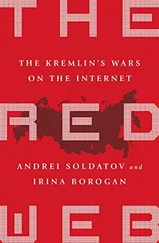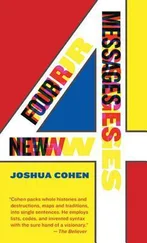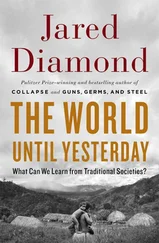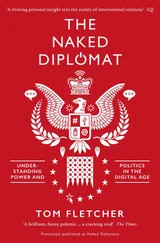Jared Cohen - The New Digital Age
Здесь есть возможность читать онлайн «Jared Cohen - The New Digital Age» весь текст электронной книги совершенно бесплатно (целиком полную версию без сокращений). В некоторых случаях можно слушать аудио, скачать через торрент в формате fb2 и присутствует краткое содержание. Жанр: Старинная литература, на английском языке. Описание произведения, (предисловие) а так же отзывы посетителей доступны на портале библиотеки ЛибКат.
- Название:The New Digital Age
- Автор:
- Жанр:
- Год:неизвестен
- ISBN:нет данных
- Рейтинг книги:5 / 5. Голосов: 1
-
Избранное:Добавить в избранное
- Отзывы:
-
Ваша оценка:
- 100
- 1
- 2
- 3
- 4
- 5
The New Digital Age: краткое содержание, описание и аннотация
Предлагаем к чтению аннотацию, описание, краткое содержание или предисловие (зависит от того, что написал сам автор книги «The New Digital Age»). Если вы не нашли необходимую информацию о книге — напишите в комментариях, мы постараемся отыскать её.
The New Digital Age — читать онлайн бесплатно полную книгу (весь текст) целиком
Ниже представлен текст книги, разбитый по страницам. Система сохранения места последней прочитанной страницы, позволяет с удобством читать онлайн бесплатно книгу «The New Digital Age», без необходимости каждый раз заново искать на чём Вы остановились. Поставьте закладку, и сможете в любой момент перейти на страницу, на которой закончили чтение.
Интервал:
Закладка:
Room for Innovation
If the destruction of institutions and systems caused by upheaval has a silver lining, it’s that it clears the path for new ideas. Innovation exists everywhere, even in the labored and intricate work of reconstruction, and it will be enhanced with a fast network, good leadership and plentiful devices, meaning smart phones and tablets.
We’re already seeing how Internet tools are being refashioned to serve in a postcrisis environment. Ushahidi (the name means “testimony” in Swahili), an open-source crisis-mapping platform that aggregates crowd-sourced data to build a living information map, demonstrated this to great effect after the 2010 Haitian earthquake. Using a basic mapping platform, Ushahidi volunteers in the United States built a live crisis map just one hour after the earthquake struck, with a designated short code (4636) for people on the ground to text information to; it was subsequently publicized on national and local Haitian radio stations. Engineers outside Haiti added the data that was collected to an interactive online map that aggregated reports of destruction, needed emergency supplies, trapped people and violence or crime. Many of the text messages were in Creole, so Ushahidi worked with a network of thousands of Haitian-Americans to translate the information, cutting translation time to just ten minutes. Within a few weeks, they’d mapped some 2,500 reports; Carol Waters, Ushahidi-Haiti’s director of communications and partnerships, said that many of those messages simply read, “I’m buried under ruble [ sic ], but I’m still alive.”
Ushahidi’s quick thinking and quick coding saved lives. In the future, crisis maps like these will become standard and their creation will probably be government-led. By centralizing the information with an official and trusted source, some of the problems that Ushahidi faced (like other NGOs not knowing about the platform) could be avoided. Of course, there is the risk that a government-led project would fall victim to bureaucracy or legal restrictions that would prevent it from keeping up with non-state actors like Ushahidi. But if the response were immediate, there is tremendous potential for a government-led crisis map because it could grow to encompass much more than emergency information. The map could stay active throughout the reconstruction process, and it could serve as a platform through which the government shared and received information about the various reconstruction projects and environments it managed.
For any postcrisis society, citizens could be told where known safe zones (i.e., free of mines or militia) in their neighborhoods were, where the best mobile coverage was or where the largest investments in reconstruction efforts had been made. Citizen reporting on incidents of crime, violence or corruption would keep the government informed. An integrated system of crisis information like this would not only keep the population safer, healthier and more aware, it would also cut some of the waste, corruption and redundancy that reconstruction efforts always generate. Not all postcrisis governments will be interested in such transparency, to be sure, but if the population and the international community were widely aware of the model, there might be sufficient public pressure to adopt it anyway. The delivery of foreign aid could even be made contingent on it. And no doubt there would be many willing non-state partners and volunteers ready to participate in the process.
But the first priority for a postcrisis state is, usually, managing the fragile security environment. Interactive maps can help with that, but they won’t be enough. Those early moments when a conflict ends are the most delicate, because the interim government must demonstrate that it is in control and responsive to the people, or else it risks being chased out by the same population that installed it. In order for daily life to resume, citizens must feel safe enough to reopen businesses, rebuild homes and replant crops, so mitigating the volatility in the environment is vital for building citizen trust in the reconstruction process. Smart uses of technology can help the state reassert the rule of law in important ways.
By virtue of their functionality, mobile phones will become key conduits and valuable assets as the state works to manage the security environment. For countries with a functional military, the question of whether its members will uphold the rule of law—as opposed to defecting, committing criminal acts or seizing power for themselves—will depend less on personal motives than on their faith in the competency of the government. Put simply, for most people in uniform it will come down to whether they receive a paycheck reliably and relatively free of graft; they need to know who is in charge.
Future technology platforms will assist law enforcement in this process by equipping every police and army officer with a specialized handset device that contains several distinct (and highly secure) apps. One app will handle salaries and serve as the interface between officers and the ministry that pays them. In Afghanistan, the telecom Roshan has launched a pilot program to pay Afghan national police officers electronically through a mobile banking platform—a bold move geared toward ending the rampant corruption that cripples the country’s finances. On these specialized phones, another app could require officers to report their daily activities, as they might in a logbook, storing that information in the cloud that commanders could later mine for metrics on efficiency and impact. Other apps could offer training tips or virtual mentors for newly integrated officers—as in the case of Libya, where many of the militia fighters were integrated into the newly created army—and they could provide secure online spaces for anonymous reporting of corruption or other illegal activities by other officers.
Citizen reporting over mobile platforms would strengthen the state’s ability to maintain security, should the two sides choose to work together. Every citizen with a mobile device is a potential witness and investigator, more widely dispersed than any law-enforcement body and ready to document evidence of wrongdoing. In the best cases, citizens will choose to participate in these mobile vigilance activities, out of national sentiment or self-interest, and together with the state they will help build a safer and more honest society. In the worst cases, where large portions of the population distrust the government or favor the ex-combatants (like those who fought the battle against Gadhafi), those citizen-reporting channels could be used to share false information and waste police time.
Citizen engagement will be crucial beyond initial security issues, too. With the right platforms and a government inclined toward transparency, people on the ground will be able to monitor progress, report corruption, share suggestions and become an integral part of the conversations between the government, NGOs and foreign actors—all using mobile phones. We spoke with the Rwandan president Paul Kagame, who remains among the most tech-savvy leaders in Africa, and asked how mobile technology is transforming the way citizens address local challenges. “Where people have needs—economic, security and social—they will turn to their phones,” he said, “because their phones are the only way to protect themselves. People who need immediate help can now get it.” This, he explained, was a game-changer for populations in developing countries and particularly for people emerging from conflict or crisis. Building trust in the government is a crucial task, and by leveraging citizen participation through open platforms, this process can be much quicker and more sustainable: “In Rwanda, we have built a community policing program, where the community passes on information,” Kagame said, stressing that it was made much more efficient by the use of technology.
Читать дальшеИнтервал:
Закладка:
Похожие книги на «The New Digital Age»
Представляем Вашему вниманию похожие книги на «The New Digital Age» списком для выбора. Мы отобрали схожую по названию и смыслу литературу в надежде предоставить читателям больше вариантов отыскать новые, интересные, ещё непрочитанные произведения.
Обсуждение, отзывы о книге «The New Digital Age» и просто собственные мнения читателей. Оставьте ваши комментарии, напишите, что Вы думаете о произведении, его смысле или главных героях. Укажите что конкретно понравилось, а что нет, и почему Вы так считаете.












